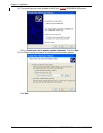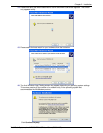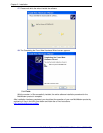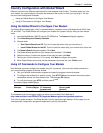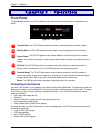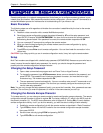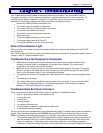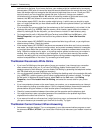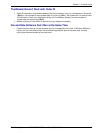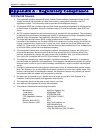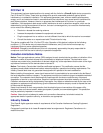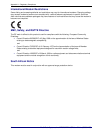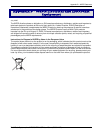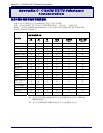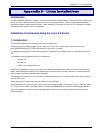
Chapter 5 - Troubleshooting
26
Multi-Tech Systems, Inc. MT9234ZBA-USB User Guide (S000419C)
and listen for a dial tone. If you hear a dial tone, your modem might be installed behind a company
phone system (PBX) with an internal dial tone that sounds different from the normal dial tone. In that
case, the modem might not recognize the dial tone and might treat it as an error. Check your PBX
manual to see if you can change the internal dial tone; if you can’t, change your modem’s
initialization string to replace
X4
with
X3
, which will cause the modem to ignore dial tones (note,
however,
that
X3
is not allowed in some countries, such as France and Spain).
•
If the modem reports BUSY, the other number might be busy, in which case you should try again
later, or it might indicate that you have failed to add a
9,
prefix to the phone number if you must dial
9 for an outside line.
•
If you must dial 9 to get an outside line, the easiest way to dial it automatically is to include it in the
modem’s dial prefix, e.g.,
ATDT9,
. Note the comma, which inserts a pause before the number is
dialed. By inserting
9,
into the dial prefix, you do not have to include it in each directory entry.
•
To change the dial prefix in Windows 98 HyperTerminal, select
Call
from the
Call
menu, click
Dialing Properties
, and type
9
in the local and long distance boxes in
How I dial from this
location
.
•
If the modem reports NO ANSWER, the other system has failed to go off-hook, or you might have
dialed a wrong number. Check the number.
•
If the modem reports NO CARRIER, the phone was answered at the other end, but no connection
was made. You might have dialed a wrong number, and a person answered instead of a computer,
or you might have dialed the correct number, but the other computer or software was turned off or
faulty. Check the number and try again, or try calling another system to make sure your modem is
working. Also, try calling the number on your telephone. If you hear harsh sounds, then another
modem is answering the call, and the modems might be having problems negotiating because of
modem incompatibilities or line noise. Try connecting at a lower speed.
The Modem Disconnects While Online
•
If you have Call Waiting on the same phone line as your modem, it can interrupt your connection
when someone tries to call you. If you have Call Waiting, disable it before each call. In most
telephone areas in North America, you can disable Call Waiting by preceding the telephone number
with
*70
(check with your local telephone company).
•
You can automatically disable Call Waiting by including the disabling code in the modem’s dial prefix
(e.g.,
ATDT*70,
—note the comma, which inserts a pause before the number is dialed). To change
the dial prefix in Windows 98 HyperTerminal, select
Call
from the
Call
menu, click
Dialing
Properties
, check
This location has Call Waiting
, and select the correct code for your phone
service.
•
If you have extension phones on the same line as your modem, you or someone else can interrupt
the connection by picking up another phone. If this is a frequent problem, disconnect the extension
phones before using the modem, or install another phone line especially for the modem.
•
Check for loose connections between the modem and the computer and the telephone jack.
•
You might have had a poor connection because of line conditions or the problem might have
originated on the other end of the line. Try again.
•
If you were online with an online service, it might have hung up on you because of lack of activity on
your part or because you exceeded your time limit for the day. Try again.
The Modem Cannot Connect When Answering
•
Autoanswer might be disabled. Turn on autoanswer in your data communications program or send
the command
ATS0=1
(
ATS0=2
if you have Caller ID service) to make sure your modem in terminal
mode.



